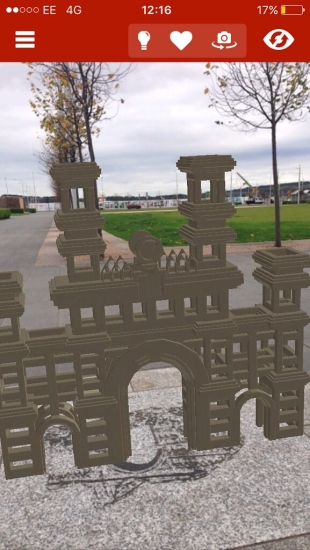NEoN Digital Arts Archive
RENDERING THE PAST
3DVisLab
NORTH END OF SLESSOR GARDENS
Waterfront Place
Digital reconstruction presents archaeologists with engaging and dynamic methods for storytelling, visualisation and research. Produced using a combination of photogrammetry, LIDAR scanning and digital reconstruction the team at DJCAD’s 3DVisLab invite you to explore Dundee’s lost architecture through augmented reality.
At the north end of Slessor Gardens is the site of the former Royal Arch, now marked with four paving slabs engraved with images from the arch’s history. You can explore 3D digital models of four incarnations of the arch in augmented reality by viewing the engravings with your mobile device.
Download the free zappar app on to your mobile device. In the Zappar app, scan the Zapcodes (on the poster adjacent to the site) with the camera on your mobile device. Tap on the heart icon to add each Zapcode to your favourites. Then just point the camera on your mobile device at the paving slab engravings to see the digital models.
Or, if you have the app already, just click these links when you’re standing next to the engravings!
Triumphal Arch
Royal Arch
Royal Visit
Cardboard Arch
About the Artists
The digital arches project was undertaken at 3DVisLab, the University of Dundee, 3D artists Dr Alice Watterson, Dr Kieran Baxter and Verda Munir developed the digital reconstructions of the arch which were brought into augmented reality by John Anderson.
Dr Alice Watterson is an archaeologist specializing in illustration and digital survey and she is currently exploring the use of digital reconstruction as an interpretive tool, focusing on blending digital data with creative practice to general original interpretative content.
Dr Kieran Baxter is a creative practitioner specializing in web design, aerial photography and visualization. Through his research, Baxter has found that aerial photography and computer-generated imagery can offer an insight into historical built environments. Watterson, Baxter as well as other panellists will look at these practices and how it affects new forms of storytelling, archaeological research and animating the past.
